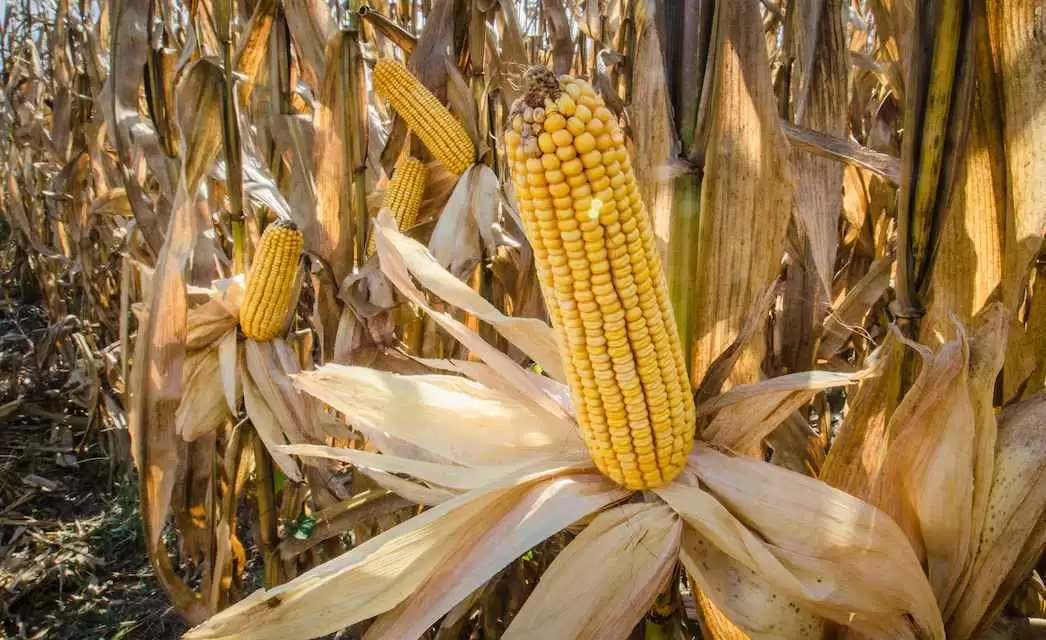
Celiac.com 01/26/2016 - One part of our natural protection from the microbes and toxins in our environment is the innate part of our immune systems. This includes everything from our skin, to the mucous we produce in various tissues which engulfs unwanted or harmful particles, isolating them and ultimately expelling them from the body in fecal matter and mucous, such as from our sinuses. While our immune systems have other components, it is the innate system that provides most of our protection from the world outside our bodies. The intestinal mucosa is very much a part of this system. Thus, since Hollon et al found that "Increased intestinal permeability after gliadin exposure occurs in all individuals" (1), there should be little doubt that humans are not well adapted to consuming these storage proteins from wheat, or gliadin's near relatives from rye and barley. Anyone eating these grains is opening a portal into their bloodstreams so toxins, microbes, along with undigested and partly digested proteins can enter their circulation. Without gliadin's impact, these various substances would probably not have entered the bloodstream and would have been wasted with feces.
Just as few of us would ever consider putting fecal matter on an open wound, neither would we knowingly introduce this same material into the bloodstream through the intestinal wall. Yet, that is the net effect of humans consuming gluten grains. We are giving microbes access to our circulation. These harmful substances may be destroyed by other parts of our immune systems. Or perhaps we will develop episodic or chronic inflammation, leading to vascular damage where plaques can accumulate to cause atherosclerosis. Or the inflammation may use up available serotonin and its precursor, tryptophan, leading to depression. Or this they may cause one of the many other forms of damage that can be induced by inflammation. Or perhaps these infectious agents will manifest in other ailments, the causes of which will often remain obscure, as they degrade our health. Just one example of this risk can be found in a recent report in which antibiotic resistant staph infections were detected in 13% of pasteurized milk samples, and in 75% of raw milk samples (2). The acid in our stomachs, another part of the innate immune system, may provide some protection against this hazard.
Celiac.com Sponsor (A12):
On the other hand, microbes that have gained entrance into the circulation have also been implicated in some cases of arthritis, where the infectious agent binds to proteins in synovial fluid. Selective antibodies then target these complexes, causing damage to both the invader and the self tissues (3, 4).
Toxins, especially those from insecticides and other chemicals likely to be found in or on our food supply are also cause for concern. Although most cases of organophosphate insecticide poisoning were the result of suicide attempts, these substances are widely used on a variety of food crops, and can be very dangerous (5). After all, both herbicides and pesticides are designed to kill small organisms. Because of our size, we may require more of these substances to get the job done but we, too, are organisms.
One component of such substances is inorganic arsenic, which can also be found in natural rock deposits, some wood preservatives, rice, and sea foods, any or all of which can find its way to our bloodstreams (7) especially if we consume gluten grains. Of particular concern is that rice is often a staple of the gluten-free diet and it has been shown to have a strong affinity for inorganic arsenic, which "is a chronic, non-threshold carcinogen" (7). Thus, unlike smoking tobacco, even the smallest dose can result in cancer. Further, there are many areas of the United States where the groundwater is significantly contaminated with arsenic (8). Either drinking such water or excessive dietary reliance on rice grown in such a contaminated area can result in arsenic poisoning, as reported by Signes-Pastor et al (7) in a housewife in Saudi Arabia, who had celiac disease and relied heavily on rice. These authors first suspected dietary non-compliance until urine tests revealed an arsenic concentration at 46 times the highest value of the normal range (7). Her symptoms included: "progressive fatigue, profound watery diarrhea (12 times/d), palpitation, dry mouth, poor appetite, poor taste, sleeplessness, impaired concentration, and short-term memory" (7).
Proteins from outside our bodies are eschewed by our selective immune systems, identifying them as foreign, and mount an attack against these "aliens". So any undigested proteins from the foods we eat, if they arrive in our bloodstream, are going to result in the mobilization of antibodies aimed at the destruction of these proteins. This sounds like a process for developing an allergic response against common foods.
However, some proteins are worse than others. Gliadin, for instance, has long been recognized as harmful to many human cells (9). Humans also lack the necessary enzymes to fully digest it (10). Thus, after gliadin has caused increased zonulin production, leading to increased intestinal permeability, it can enter the bloodstream and travel to various tissues and organs where this undigested or partly digested family of proteins will induce one or more of their range of damaging impacts on the cells each molecule contacts. Dolfini et al have also reported that gliadin "induces an imbalance in the antioxidative mechanism of cells" (11) and it wreaks havoc on human cells by changing their shape, structure, and reducing their viability, as well as inhibiting enzyme production within the cell and/or inducing cell death (11).
Since some humans have been consuming these grains for more than 10,000 years, one might expect that we would have evolved a digestive tract that could neutralize this threat to our wellness. Unfortunately, the issue isn't that simple. Only a small segment of the human population started cultivating gluten grains so long ago. The early development of this agriculture was also very localized and episodic. It would begin in one area then, for some unknown reason, the fields would be abandoned after some period of time. Then it would (excuse the pun) crop up in another, nearby area of the Fertile Crescent (what is now parts of Iraq, Iran, Kuwait, Syria, Lebanon, Jordan, Palestine, Israel, and Egypt). The net result was that it took some time before cereal agriculture was a thriving concern. This may be explained by the illnesses that are reflected in the bones of those early farmers (11). Gluten grains appear to have taken a much greater toll on their health than it does on us now, so some adaptation has probably occurred. Nonetheless, once grain cultivation got a good start, it spread fairly quickly across Europe, arriving in England by about 5,000 years ago.
Populations living in environments that were not conducive to grain cultivation, either due to climate or soil conditions would wait much longer to incorporate gluten grains as a staple in their diets. Modern transportation systems were required to bring this crippling food to some doorsteps in Scandanavia, parts of Scotland and Ireland, and many other such environments throughout Europe. However, even in those halcyon days when the sun never set on the British Empire, Europeans really weren't the only people on the planet. They may have behaved as if they were, but that's an issue for another discussion. In the meantime, the bulk of the world's population had not eaten gluten grains until much more recently, when Europeans "shared" these grains almost everywhere they traveled. Most of the populations these Europeans met during their travels had also missed out on the many European plagues, including bubonic plague, smallpox, and typhoid fever, as well as the filthy living conditions that were common in Europe. These conditions had selected only those with the most vigorous immune systems to carry on as Europeans. When gifts such as smallpox-infected blankets were given to natives, these naive populations succumbed, in large numbers.
Further, only a small percentage of these naive populations who were very recently introduced to gluten were developing celiac disease. For instance, only about 5.6% of Saharawi children of Northern Africa had developed celiac disease when tested by Dr. Catassi and colleagues some 50 years or so after they had begun to eat gluten (12).
European "explorers" probably didn't really notice such illnesses among their grain-naive hosts. Nobody had the technology or the medical understanding to identify celiac disease or the many neurological ailments that gluten causes anyway. Many of us still deal with deep wells of medical ignorance, in the context of a very modern medical system, when it comes to our disease, so how could we expect anything more from those sea-faring Europeans of four or five centuries ago?
Perhaps those gluten derived opioids probably felt pretty good to people who tried gluten. Whatever the reason, the rest of the world seems to have adopted Europe's dietary choices, pursuing the "comfort" of gluten grains while developing myriad forms of autoimmune disease, neurological dysfunction, gastrointestinal complaint, and a variety of other ailments. And most of the people I encounter would rather deny the health risks than give up donuts, cake, pie, and toast (13).
Note: I'm proud to announce that I've been given the privilege of reviewing a new book that will be published early next year, under the Touchstone imprint, by Simon and Schuster. I will be writing about some interesting new insights this exciting book offers into the world of gluten sensitivity in the next issue of the Journal of Gluten Sensitivity.
Sources:
- Hollon J, Puppa EL, Greenwald B, Goldberg E, Guerrerio A, Fasano A. Effect of Gliadin on Permeability of Intestinal Biopsy Explants from Celiac Disease Patients and Patients with Non-Celiac Gluten Sensitivity. Nutrients 2015, 7, 1565-1576.
- Akindolire MA, Babalola OO, and Ateba CN. Detection of Antibiotic Resistant Staphylococcus aureus from Milk: A Public Health Implication. Int. J. Environ. Res. Public Health 2015, 12, 10254-10275.
- Li S, Yu Y, Koehn celiac disease, Zhang Z, Su K. Galectins in the Pathogenesis of Rheumatoid Arthritis. J Clin Cell Immunol. 2013 Sep 30;4(5).
- Cordain L, Toohey L, Smith MJ, Hickey MS. Modulation of immune function by dietary lectins in rheumatoid arthritis. Br J Nutr. 2000 Mar;83(3):207-17.
- Coskun R, Gundogan K, Sezgin GC, Topaloglu US, Hebbar G, Guven M, Sungur M. A retrospective review of intensive care management of organophosphate insecticide poisoning: Single center experience. Niger J Clin Pract. 2015 Sep-Oct;18(5):644-50.
- Hasanato RM, Almomen AM. Unusual presentation of arsenic poisoning in a case of celiac disease. Ann Saudi Med. 2015 Mar-Apr;35(2):165-7.
- Signes-Pastor AJ, Carey M, Meharg AA. Inorganic arsenic in rice-based products for infants and young children. Food Chem. 2016 Jan 15;191:128-34.
- United States Geological Survey. 2005. Arsenic in ground water in the United States. Open Original Shared Link Last Modified: Thursday, 17-Nov-2011
- Hudson DA, Purdham DR, Cornell HJ, Rolles CJ. Non specific cytotoxicity of wheat gliadin components towards cultured human cells. Lancet 1976; 1: 339-341.
- Kagnoff M. Private communication. 2005
- Dolfini E, Elli L, Roncoroni L, Costa B, Colleoni MP, Lorusso V, Ramponi S,Braidotti P, Ferrero S, Falini ML, Bardella MT. Damaging effects of gliadin on three-dimensional cell culture model. World J Gastroenterol. 2005 Oct 14;11(38):5973-7.
- Rätsch IM, Catassi C. Coeliac disease: a potentially treatable health problem of Saharawi refugee children. Bull World Health Organ. 2001;79(6):541-5.
- Cordain L. Cereal grains: humanity's double-edged sword. World Rev Nutr Diet. 1999;84:19-73.


.webp.590589ca4138c4074eca33f41f5233ba.webp)

.webp.5651f561de41bbe4f2affeb398a650b2.webp)


.webp.fe6c78a394a908c8426b482004aaf7be.webp)











Recommended Comments
There are no comments to display.